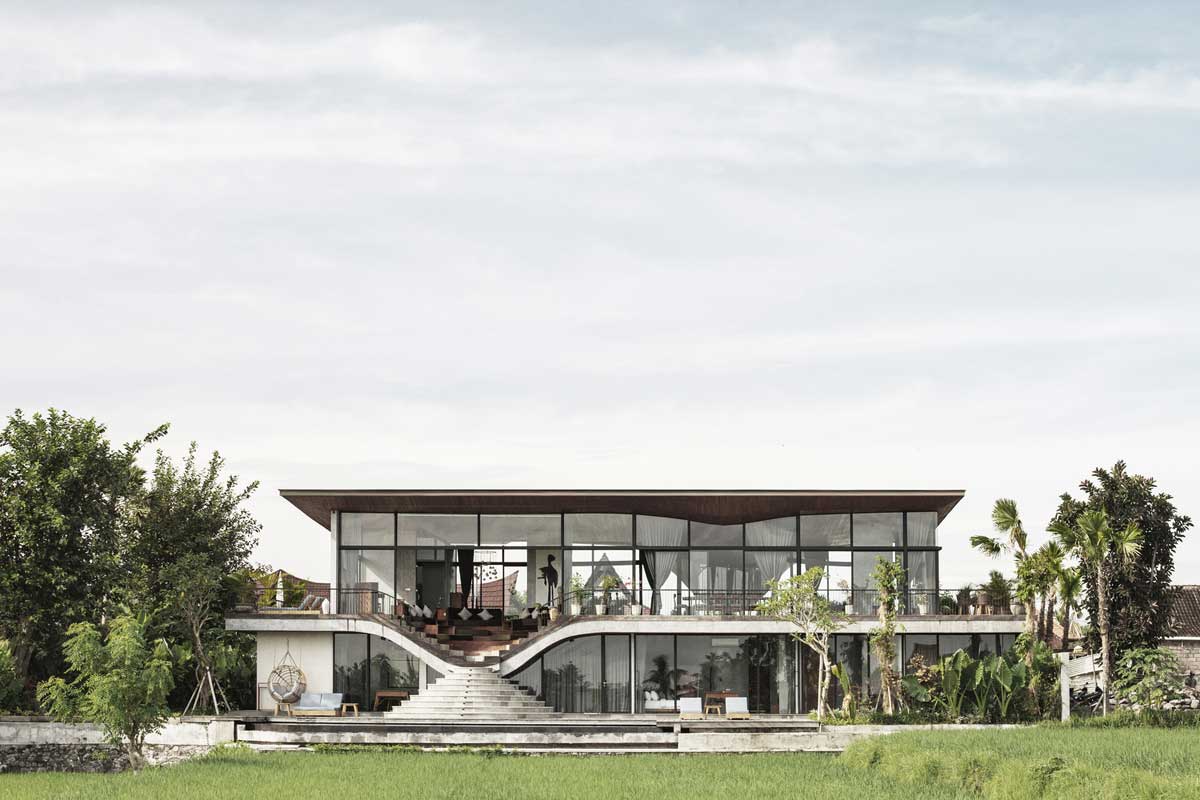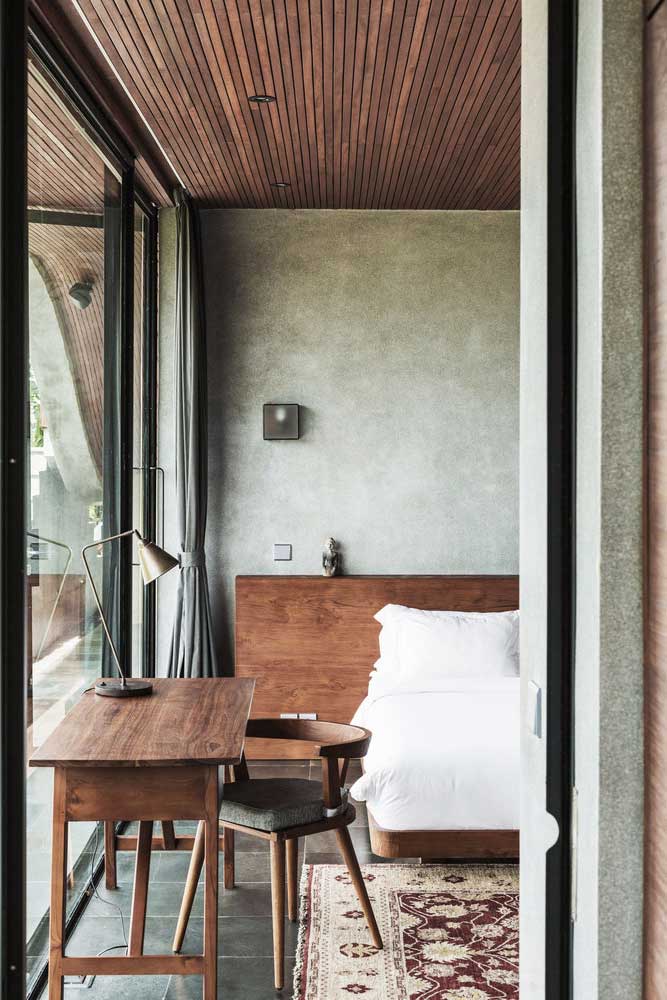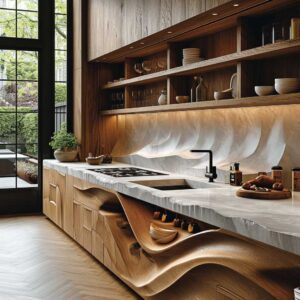Nestled in the heart of Bali, a residence stands as a testament to the harmonious blend of nature and architecture. With its curved lines and wood-patterned interiors, the home is not just a living space but an artistic expression, drawing inspiration from the serene rice paddies and coconut trees that surround it.






| Architects | https://alexisdornier.com/ |
| Images | https://tommasoriva.com/ |
The Beauty of Curved Architecture
Curved lines in architecture are more than just a design choice; they are a reflection of nature’s rhythms. In this residence, these curves mirror the undulating waves of sound, creating spaces that are both visually and acoustically harmonious. The absence of sharp angles ensures a seamless flow, making the home feel expansive and connected.
The multi-planar spaces, a result of this curved design, add depth and dimension. They create pockets of light and shadow, adding dynamism to the interiors. This play of light, coupled with the panoramic views, ensures that the home remains bathed in a warm, natural glow, enhancing its ambiance.
Furthermore, the curved design ensures optimal ventilation. The strategic placement of windows and openings facilitates a constant flow of fresh air, reducing the reliance on artificial cooling and making the home energy-efficient.
Lastly, the curves, with their organic form, ensure that the home remains in harmony with its surroundings. They echo the gentle slopes of the rice paddies, creating a visual continuity that is both pleasing and calming.


Wood-Patterned Interiors: A Nod to Nature
Wood, with its warmth and texture, plays a pivotal role in the home’s design. The wood-patterned surfaces, reminiscent of sound waves, add character and depth to the interiors. They not only enhance the home’s aesthetic appeal but also play a role in its acoustics, ensuring a serene indoor environment.
The choice of wood, a sustainable material, further enhances the home’s green credentials. It ensures that the home remains cool during the summers and warm during the winters, reducing energy consumption and ensuring comfort.
The wood-patterned ceilings, in particular, are a design marvel. They add height and grandeur, making the spaces feel expansive. Their intricate patterns, inspired by sound waves, create a visual rhythm, adding dynamism to the interiors.
Furthermore, wood, with its natural finish, ensures that the home remains in harmony with its surroundings. It echoes the earthy tones of the rice paddies and coconut trees, creating a visual continuity that is both pleasing and calming.
In essence, the wood-patterned interiors, with their warmth and texture, ensure that the home remains a sanctuary, a space that is both comforting and inspiring.


Embracing the Landscape
The residence doesn’t just stand in nature; it embraces it. Every design choice, from the curved architecture to the wood-patterned interiors, is made keeping in mind the lush landscape that surrounds the home. The panoramic windows, for instance, frame the verdant rice paddies and coconut trees, turning them into living artworks that change with the seasons.
The outdoor spaces, too, are a nod to nature. The terraces and balconies, with their unobstructed views, serve as extensions of the interiors, blurring the lines between the inside and the outside. They provide spaces to relax, to meditate, to connect with nature, making the home a sanctuary in the truest sense.
Furthermore, the residence’s orientation ensures that it remains protected from the harsh tropical sun. The curved design, coupled with the strategic placement of windows, ensures that the interiors remain cool and comfortable, irrespective of external weather conditions.
In essence, the home, with its design choices, ensures that nature remains an integral part of the living experience. It showcases how architecture can enhance, rather than disrupt, the natural landscape, creating spaces that are in harmony with their surroundings.




A Testament to Sustainable Design
Sustainability is at the heart of the residence’s design. The use of wood, a renewable material, ensures that the home’s carbon footprint remains minimal. The curved architecture, with its optimal ventilation, reduces the reliance on artificial cooling, making the home energy-efficient.
Rainwater harvesting is another sustainable feature. The curved roof channels rainwater, which is then stored and reused, reducing the home’s water consumption. The use of local materials, too, ensures that the home remains eco-friendly, reducing the need for transportation and the associated carbon emissions.
Furthermore, the residence, with its minimalistic design, reduces the need for excessive furnishings, further enhancing its green credentials. The open spaces, devoid of clutter, ensure that the home remains in harmony with its surroundings, both aesthetically and environmentally.
In essence, the residence stands as a beacon of sustainable design. It showcases how homes can be beautiful, functional, and kind to the planet, setting a benchmark for future architectural endeavors.




The residence in Bali is more than just a home; it’s a vision. It stands as a testament to the power of design, of how architecture can enhance both space and sustainability. It’s a story of how the past can inspire the present, leading to creations that are timeless in their appeal.












